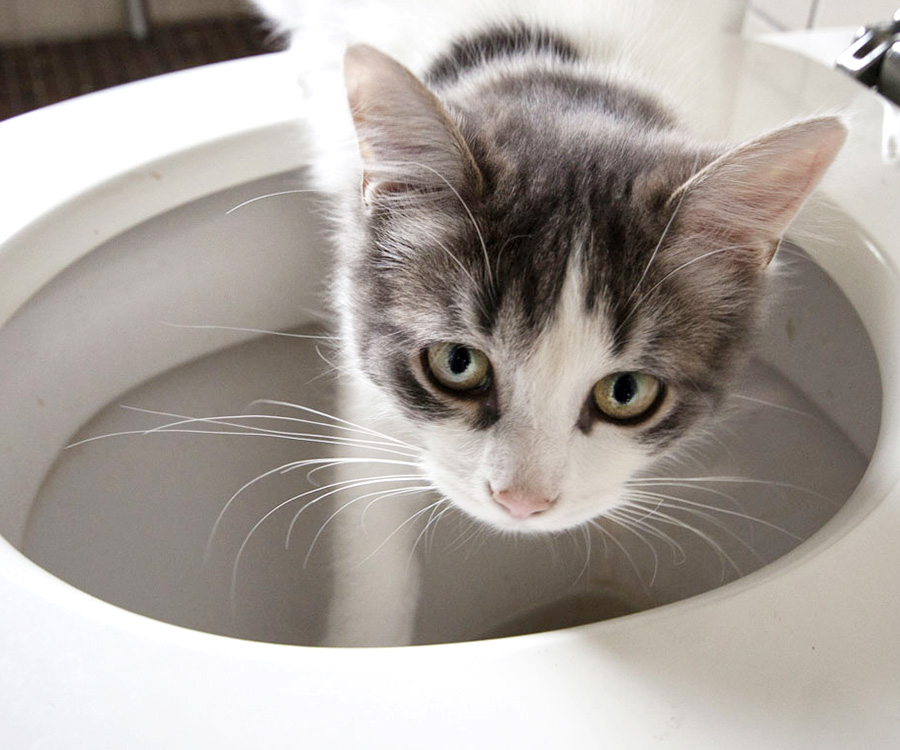Were you in search of advise around Can You Flush Cat Poo or Litter Down the Toilet??

Introduction
As cat proprietors, it's important to bear in mind exactly how we get rid of our feline close friends' waste. While it might appear convenient to purge feline poop down the toilet, this method can have damaging effects for both the environment and human wellness.
Alternatives to Flushing
Thankfully, there are safer and more accountable ways to throw away pet cat poop. Take into consideration the adhering to choices:
1. Scoop and Dispose in Trash
One of the most typical approach of dealing with pet cat poop is to scoop it into a naturally degradable bag and throw it in the garbage. Make certain to make use of a dedicated trash scoop and throw away the waste promptly.
2. Use Biodegradable Litter
Select biodegradable cat litter made from products such as corn or wheat. These litters are eco-friendly and can be securely dealt with in the trash.
3. Hide in the Yard
If you have a backyard, think about burying pet cat waste in a designated location away from veggie gardens and water sources. Make sure to dig deep enough to avoid contamination of groundwater.
4. Mount a Pet Waste Disposal System
Buy a pet waste disposal system specifically developed for pet cat waste. These systems use enzymes to break down the waste, lowering odor and ecological influence.
Health Risks
In addition to ecological issues, purging feline waste can also posture health and wellness threats to human beings. Pet cat feces might have Toxoplasma gondii, a bloodsucker that can create toxoplasmosis-- a possibly extreme illness, especially for pregnant ladies and individuals with weakened body immune systems.
Ecological Impact
Flushing cat poop introduces dangerous virus and parasites into the water, positioning a substantial risk to marine ecosystems. These contaminants can negatively influence aquatic life and concession water quality.
Conclusion
Responsible family pet ownership extends past offering food and sanctuary-- it likewise entails correct waste management. By refraining from purging cat poop down the bathroom and choosing alternative disposal techniques, we can decrease our environmental footprint and safeguard human wellness.
Why Can’t I Flush Cat Poop?
It Spreads a Parasite
Cats are frequently infected with a parasite called toxoplasma gondii. The parasite causes an infection called toxoplasmosis. It is usually harmless to cats. The parasite only uses cat poop as a host for its eggs. Otherwise, the cat’s immune system usually keeps the infection at low enough levels to maintain its own health. But it does not stop the develop of eggs. These eggs are tiny and surprisingly tough. They may survive for a year before they begin to grow. But that’s the problem.
Our wastewater system is not designed to deal with toxoplasmosis eggs. Instead, most eggs will flush from your toilet into sewers and wastewater management plants. After the sewage is treated for many other harmful things in it, it is typically released into local rivers, lakes, or oceans. Here, the toxoplasmosis eggs can find new hosts, including starfish, crabs, otters, and many other wildlife. For many, this is a significant risk to their health. Toxoplasmosis can also end up infecting water sources that are important for agriculture, which means our deer, pigs, and sheep can get infected too.
Is There Risk to Humans?
There can be a risk to human life from flushing cat poop down the toilet. If you do so, the parasites from your cat’s poop can end up in shellfish, game animals, or livestock. If this meat is then served raw or undercooked, the people who eat it can get sick.
In fact, according to the CDC, 40 million people in the United States are infected with toxoplasma gondii. They get it from exposure to infected seafood, or from some kind of cat poop contamination, like drinking from a stream that is contaminated or touching anything that has come into contact with cat poop. That includes just cleaning a cat litter box.
Most people who get infected with these parasites will not develop any symptoms. However, for pregnant women or for those with compromised immune systems, the parasite can cause severe health problems.
How to Handle Cat Poop
The best way to handle cat poop is actually to clean the box more often. The eggs that the parasite sheds will not become active until one to five days after the cat poops. That means that if you clean daily, you’re much less likely to come into direct contact with infectious eggs.
That said, always dispose of cat poop in the garbage and not down the toilet. Wash your hands before and after you clean the litter box, and bring the bag of poop right outside to your garbage bins.
https://trenchlesssolutionsusa.com/why-cant-i-flush-cat-poop/

I was shown that write-up about Don’t flush cat feces down the toilet from an associate on our other web address. If you appreciated our blog posting kindly remember to pass it around. Thanks so much for going through it.
Give Me A Quote!